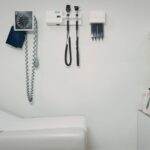Negligence in a Products Liability Action
Imagine buying a product that you believe is safe, only to find out it has caused you harm. That’s where products liability comes into play. Among the various legal theories that victims can rely on, negligence stands out. Negligence in a products liability action isn’t just about a faulty product—it’s about proving that the manufacturer or seller didn’t take reasonable care to ensure the product’s safety. But what does that mean for the average consumer, and how can one navigate the complexities of such a case?
Understanding Negligence in Products Liability
Negligence, in its simplest form, means carelessness. When it comes to products, it refers to a manufacturer or seller failing to act with the care that a reasonable person would in ensuring their product is safe. But hold on, it’s not as straightforward as it seems. Negligence in a products liability action requires you to establish several elements:
- Duty of Care: The manufacturer or seller must owe a duty of care to the consumer.
- Breach of Duty: This duty must be breached by failing to meet the standard of care expected.
- Causation: The breach must directly cause the injury or damage.
- Damages: The injury or damage must be legally recognized as compensable.
These elements create the backbone of a negligence claim in a products liability action. Each one is critical—miss one, and the case may fall apart.
Elements of Negligence in Detail
Duty of Care
Every manufacturer has a duty of care to the consumer. This means they must take all reasonable steps to ensure that their product is safe for use. But who defines what’s ‘reasonable’? Courts typically look at what a reasonable person would do under similar circumstances. This can include proper testing, clear instructions, and adequate warnings about potential dangers.
Breach of Duty
A breach occurs when the manufacturer or seller fails to meet the standard of care. For instance, if a car manufacturer skips a vital safety test to save time and costs, they’ve likely breached their duty. It’s not enough that the product was dangerous; the plaintiff must show that the danger was a result of the manufacturer’s carelessness.
Causation
Causation is the link between the breach of duty and the injury. It’s the “but for” test: but for the manufacturer’s negligence, the injury wouldn’t have occurred. However, this is often where cases get tricky. The defense might argue that the injury was caused by something else, like the consumer’s misuse of the product.
Damages
Finally, there must be actual damages—whether physical, emotional, or financial—that the law recognizes. Without damages, there’s no claim. It’s not enough that the product was defective or that negligence occurred; the consumer must have suffered a tangible loss as a result.
Common Examples of Negligence in Products Liability
Negligence in a products liability action can occur in various ways. Here are some common examples:
- Manufacturing Defects: A car’s brakes fail because the manufacturer used substandard materials.
- Design Defects: A power tool is designed without proper safety guards, leading to injuries.
- Failure to Warn: A medication doesn’t include a warning about potential side effects that are known to the manufacturer.
These examples highlight how negligence can manifest at different stages of a product’s lifecycle—from design to manufacturing to the final sale.
Proving Negligence in Court
Proving negligence in a products liability action isn’t a walk in the park. The burden of proof lies with the plaintiff, who must show that the defendant’s negligence led to their injury. This often involves presenting evidence like expert testimony, product testing results, and documentation of the defendant’s safety protocols—or lack thereof.
Moreover, the defense will likely argue that the plaintiff misused the product or was aware of the risks and chose to use it anyway. Therefore, a thorough understanding of the product and its intended use is essential for building a strong case.
FAQs
Q: What’s the difference between strict liability and negligence in a products liability case?
A: Strict liability doesn’t require proof of negligence. If the product is defective and causes injury, the manufacturer or seller can be held liable regardless of care or intent. Negligence, however, requires proving that the manufacturer or seller failed to exercise reasonable care.
Q: Can I sue for negligence if I was partially at fault for the injury?
A: It depends on the jurisdiction. Some states follow comparative negligence rules, where your compensation might be reduced based on your level of fault. Others might bar recovery if you’re found to be more than 50% at fault.
Q: How long do I have to file a negligence claim in a products liability case?
A: The statute of limitations varies by state, but typically you have a limited time from the date of injury or discovery of the injury to file your claim. It’s crucial to act quickly and consult with an attorney to ensure you don’t miss the deadline.
Conclusion
Negligence in a products liability action is a critical concept that protects consumers from harm due to careless manufacturing or selling practices. While these cases can be complex, understanding the elements of negligence and how to prove them can make all the difference. Whether you’re a victim seeking justice or simply someone interested in legal matters, knowing the intricacies of negligence in products liability can provide valuable insights.
Remember, if you find yourself injured by a product, don’t just shrug it off. The law is there to protect you, and understanding your rights could be the first step toward getting the compensation you deserve.







